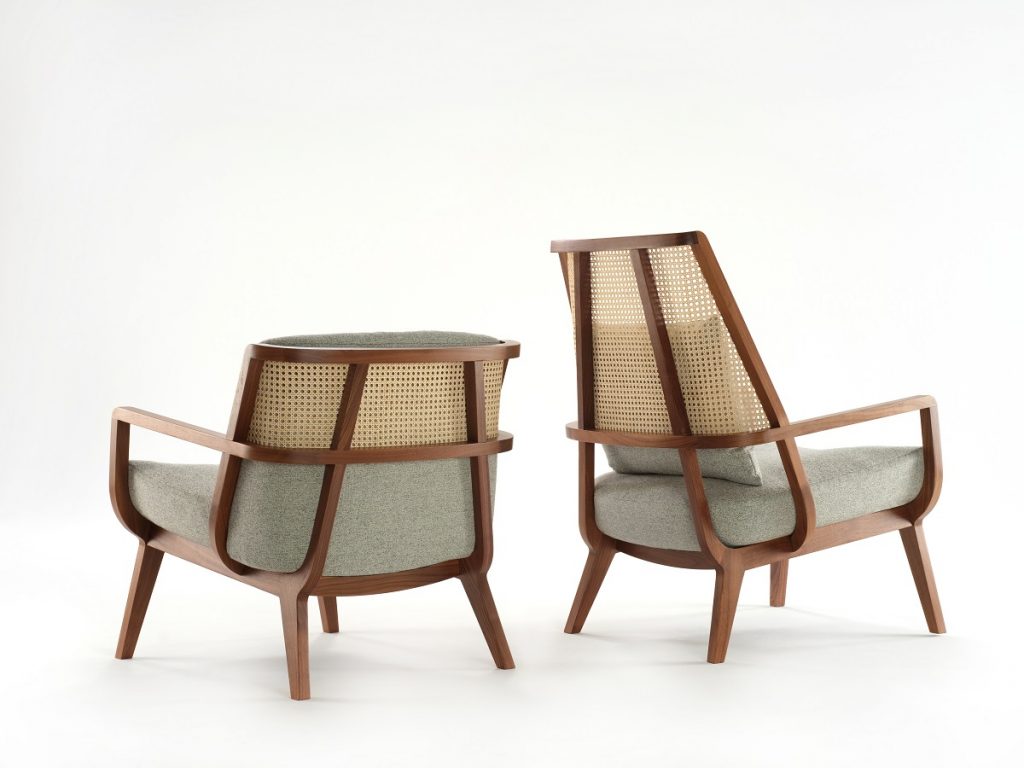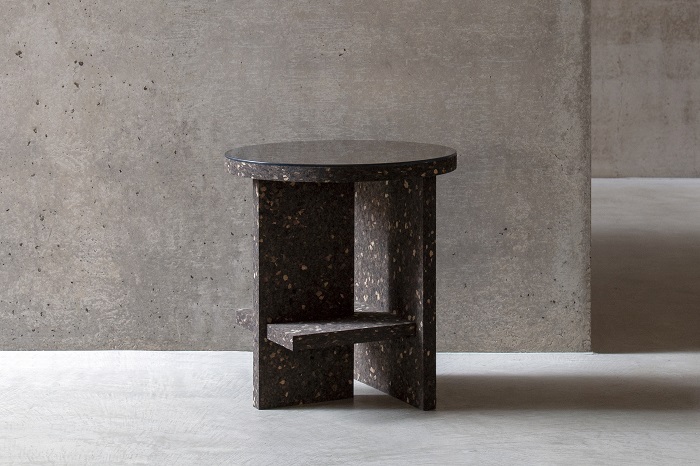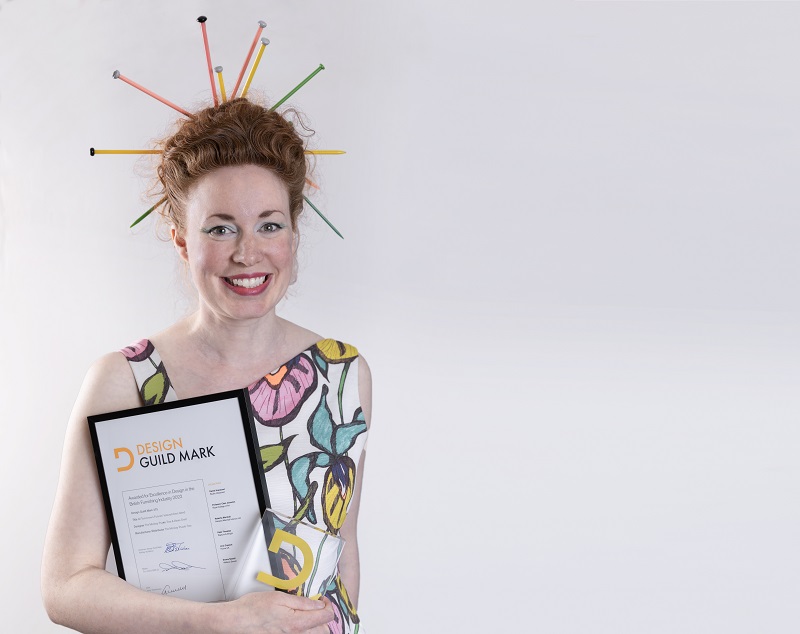
For a second year in a row The Monkey Puzzle Tree impressed our judges with their unique and highly creative textiles. For 2022 it was ‘All Tomorrow’s Futures’ that was awarded a Design Guild Mark in our Interior Design Elements category.
Designed by Charlotte Raffo, founder of The Monkey Puzzle Tree and lino cut artist Alexis Snell, this unique textile print celebrates the natural world while telling a modern-day tale of climate change, exploring the way in which the natural world and urban environments collide.
We spoke with Charlotte to find out about the genesis of All Tomorrow’s Futures.
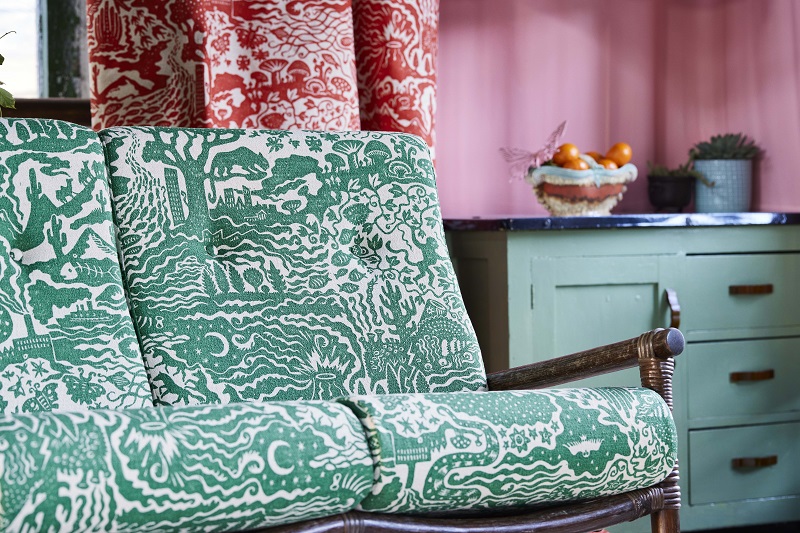
What initially inspired you to make this product?
All Tomorrow’s Futures was conceived during lockdown over a phone call between me and lino cut artist Alexis Snell. Alexis was telling me how she felt powerless in the face of climate change, and we realised that something we could do was to tell a story through print.
The concept was inspired by other patterns that tell a story like toile de Jouy fabrics and Willow Pattern plates. I wanted to make sure there was element of gritty realism as well as humour. The design is more than just a pretty pattern but at the same time we never want to take ourselves too seriously.
Can you explain the concept for the design?
The print tells the story of humankind’s impact on the planet. What initially appears as a fanciful design reveals more as you investigate it. Swallows turn into airplanes, the smoke from a factory chimney becomes a snake, and wine bottles litter the jungle alongside monkeys and tropical flowers.
As well as the print having a message about sustainability, it was important to me that we carried that idea into the construction of the textile itself. I set myself the challenge of making the fabric as locally as possible, so we worked with a tiny mill nearby to create a textured weave from linen and cotton. I wanted the natural beauty of the fibres to shine through, so we kept the base fabric undyed and unbleached, and screen printed the design with just a single colour using locally made water-based inks.
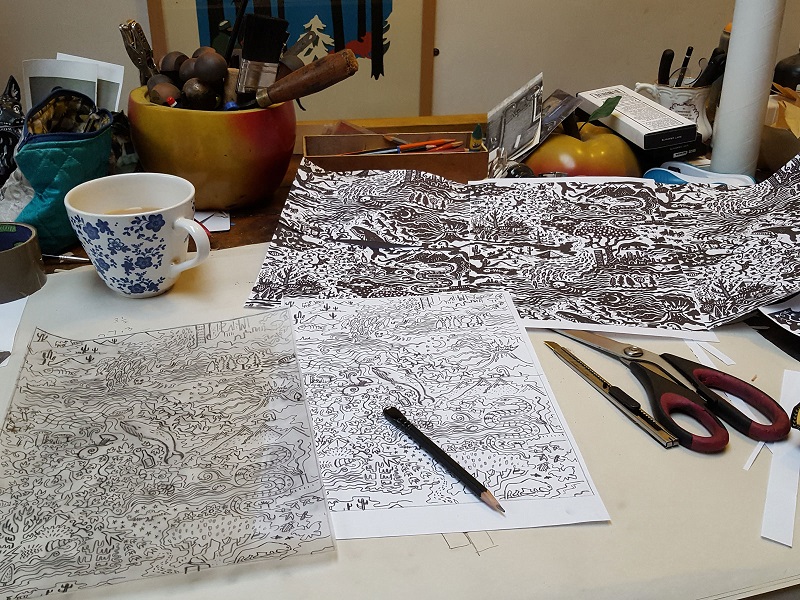
How have you struck the balance between function and design with this product?
It’s extremely important to me that as well as trying to minimise the environmental impact of producing the fabric, that the resulting design has long lasting appeal and will be loved for decades to come.
Although it would have been nice to create the fabric from pure linen which is the more sustainable fibre, we made the decision to combine it with cotton to make the resulting textile harder wearing and long lasting as well as being suitable for commercial interiors.
We also created a fringed trim on our cushions from a waste product of the weaving process. Whilst watching the textile being woven on the loom I noticed that the selvedge edge was being trimmed off the fabric to create a neat edge. I asked if I could take this waste home with me and we ended up using it as a creative and characterful trim for our cushions.
Who does this appeal to?
All Tomorrow’s Futures is quirky, fun and tongue in cheek, despite its serious message. The bold colours – Seaweed Green, Ocean Blue and Lobster orange make striking curtains or upholstery. The fabric is suitable for both residential and commercial interiors and I’l love to see it used for sweeping curtains in a hotel with a sustainable ethos.
The fabric has also proved popular for children though this wasn’t our intention. The first customer was my daughter, who had requested curtains featuring rats and owls for her bedroom! I used all three colours of the fabric joined matched together for her curtains, and she lies in bed making up stories from the print.
How long did the design process take, from initial sketches to roll out?
Our designs can take years but this one came quickly and from start to finish took eight months. I first spoke to Alexis on the phone at New Year 2021 and the sketch she doodled during that phone call perfectly captured the idea. She went on to refine the print design before carving it in lino and printing it a number of times. I worked with the mills on developing the fabric base which was tricky as it had to be done virtually due to COVID. The fabric was woven in June 2021 and then then printed a couple of weeks later in August. We launched the design at Decorex 2021 in October.
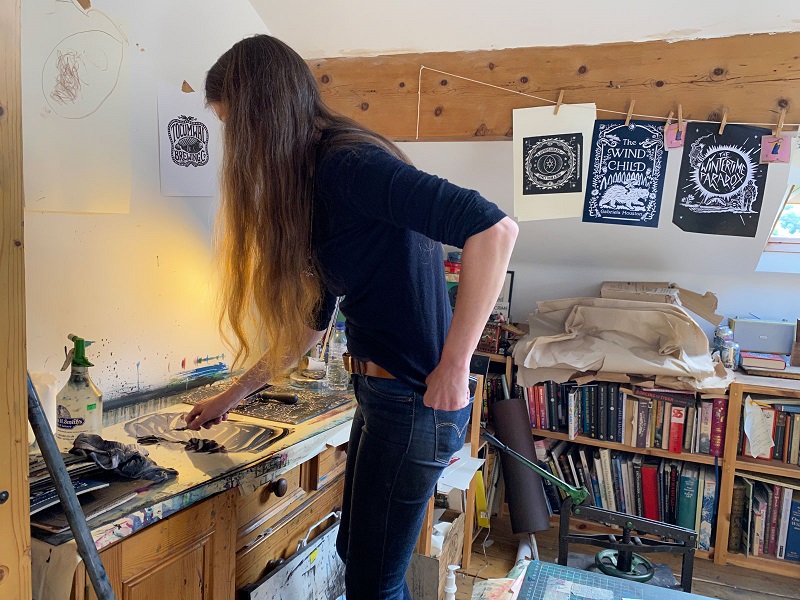
What modifications did you make along the way?
I try to keep an open mind when designing. It’s tempting to have a fixed vision and stick to it at all costs, but I’ve always found that embracing and working with challenges along the way results in a more interesting and unique outcome.
Originally the print was planned to be black on cream like Alexis’s prints on paper.
Part way through the design process I decided that black was not right for the subject matter – I wanted to inject some fun and joy into the print. I remember looking at a newly peeled orange and noticing how the cream on the inside of the peel looked like our fabric base and that the orange of the outside of the peel created a perfect contrast that felt so life affirming and vibrant.
As the base fabric was specially woven for us we needed to make quite a large quantity so I decided to go with three vibrant colours. I was inspired by Beata Heuman’s book ‘Every Room Should Sing’ as well as Matisse’s paper cuts to choose the blue and green.
In what way do you think this design is different from anything else available on the market?
The textile is completely unique because we took the extra step and commissioned the base fabric so it’s a beautifully soft and authentic texture you can’t get anywhere else.
The print tells so much of a story you could sit and look at it for hours and still see new details. Plus we haven’t shied away from reality – who else creates textiles featuring rats, snakes, skulls and skeletons alongside trees whales and flowers?!
What was the most challenging aspect of the design?
Holding my nerve! Creating this design was a big financial risk, and using traditional processes meant that we really didn’t know how the design was going to look until it was on the loom and being printed. I have learnt to trust in the process, close my eyes and just hope it will look amazing!
For more information, go to https://themonkeypuzzletree.com/



